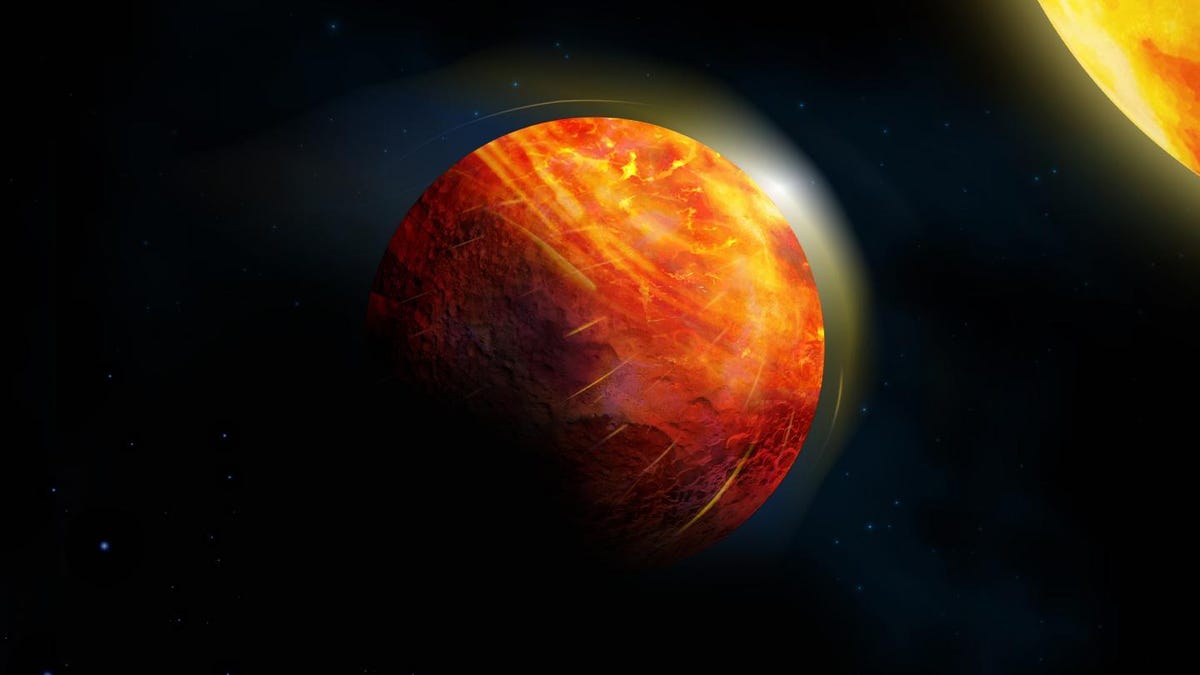On this hellscape lava planet, it rains rock and the winds are supersonic
Earth-size exoplanet K2-141b would be a wonderful place to never ever visit.
If you ever need to feel more grateful for Earth, just take a moment to contemplate some of the truly horrifying exoplanets that lurk outside our solar system. Take, for example, K2-141b, a nightmare "lava planet" where it rains rock.
A team of researchers led by York University doctoral student Tue Giang Nguyen ran computer simulations to predict the conditions and weather on the extreme planet. K2-141b has the misfortune of being located close to its host star. It's also oriented so that two-thirds of the planet is locked into blazing-hot perpetual light while the dark side remains frigid.
The scientists published a study on K2-141b in the Monthly Notices of the Royal Astronomical Society. The exoplanet could host a magma ocean reaching 62 miles (100 kilometers) deep, while its surface is buffeted by supersonic winds of over 3,100 miles per hour (5,000 kilometers per hour).
"All rocky planets, including Earth, started off as molten worlds but then rapidly cooled and solidified. Lava planets give us a rare glimpse at this stage of planetary evolution," said planetary scientist Nicolas Cowan in a McGill University statement on Tuesday.
The computer simulations suggest K2-141b is raining rocks. "On K2-141b, the mineral vapor formed by evaporated rock is swept to the frigid night side by supersonic winds and rocks 'rain' back down into a magma ocean," the university said.
The researchers hope next-generation telescopes like NASA's much-delayed James Webb Space Telescope will be able to take a closer look at the exoplanet and tell us if the computer simulations are accurate.
Even if K2-141b is only half as hellish as they think, it's enough to make you want to hug the Earth and never let go.


